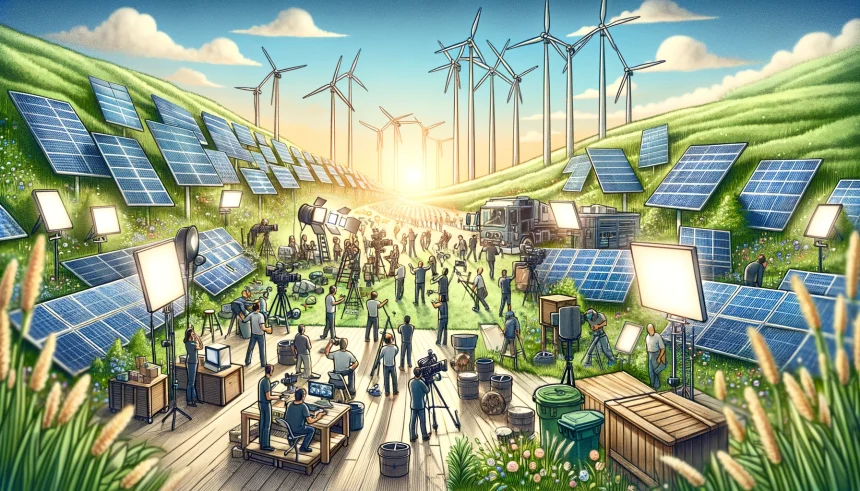In the tapestry of filmmaking, where creativity weaves through the loom of technological advancement, a revolution whispers. This uprising eschews the grandiose declarations typical of cinematic spectacles, favoring instead a nuanced and profound reconfiguration of film set mechanics. At this revolution’s core is a dedication to sustainability, manifesting through a pivot towards eco-conscious power sources. As the film industry contemplates its ecological footprint, the shift to greener energy on sets emerges not merely as an environmental nod but as a daring stride toward sculpting the future contours of cinematic production.
Environmental Echoes on Set
Historically, the realm of film production has thrived on an energy-intensive ethos. The luminescence required to sculpt the perfect visual narrative, alongside the voracious energy appetite of editing paraphernalia, casts a significant carbon shadow. Diesel generators, long the stalwarts of remote shoots, significantly exacerbate this footprint, belching not only carbon dioxide but a cocktail of other noxious effluents.
The Verdant Script: Pioneering Eco-Power Narratives
Yet, the script is undergoing a dramatic rewrite, courtesy of Green Power protagonists. The ascendancy of solar arrays, biodiesel units, and avant-garde battery systems heralds a new chapter. These green champions bring to the table a slew of virtues: slashing greenhouse emissions, curbing noise pollution, and thus, enriching the serene backdrop of outdoor cinematography.
Solar Power: Casting a Renewable Spotlight
Solar power emerges as the luminary, with its cohorts of portable generators and panel arrays now a common spectacle on sets. These solar sentinels harness celestial energy, channeling it into everything from set illumination to the mechanical heartbeats of cameras, offering a pristine, inexhaustible energy wellspring. Solar power’s adaptability and prowess render it a perfect fit for film ventures aiming to curtail their environmental narrative.
Biodiesel Generators: A Symphony of Cleaner Combustion
In the biodiesel arena, generators fueled by renewable elixirs like vegetable oil or animal derivatives present a cleaner overture to their diesel brethren. Emitting a lesser volume of pollutants, they align with the industry’s burgeoning eco-conscious ethos.
Battery Storage: The Vanguard of Innovation
The evolution of battery storage technology stands at the vanguard, with its capacity to hoard renewable energy ensuring a steadfast and dependable power supply across the filming chronology. This innovation not only diminishes dependency on conventional power matrices but also unlocks new horizons for filming in remote and ecologically fragile locales.
Ripple Effects: Beyond the Lens
The ramifications of this green revolution ripple well beyond the immediate boon of environmental conservation. Embracing eco-friendly power conduits can markedly deflate operational expenditures over time. Furthermore, this green allegiance polishes the industry’s image, resonating with a global audience increasingly attuned to environmental narratives.
Leadership and Innovation: The Catalysts
Propelling this metamorphosis demands visionary leadership intertwined with an embrace of innovation. Industry vanguards, production conglomerates, and even solitary filmmakers bear a pivotal mantle. By elevating green power narratives to the zenith of their production ethos, they can recalibrate industry sustainability benchmarks.
Envisioning Tomorrow: A Sustainable Cinematic Canvas
Peering into the future, the prospects for amplifying the use of eco-friendly power on film sets loom large. With relentless strides in green tech and a collective sustainability ethos, the film industry is on the cusp of becoming a paragon of environmental guardianship.
Epilogue: A Clarion Call
The transformation of film sets through the prism of eco-friendly power transcends mere trendiness; it embodies an indispensable evolution in the cinematic storytelling paradigm. As this green reel movement gathers steam, it beckons every industry stakeholder to reflect on their environmental legacy and to act decisively. By channeling the essence of eco-friendly power solutions, the film sector is poised not only to weave compelling screen sagas but to etch a lasting, sustainable legacy in the annals of cinematic history.








